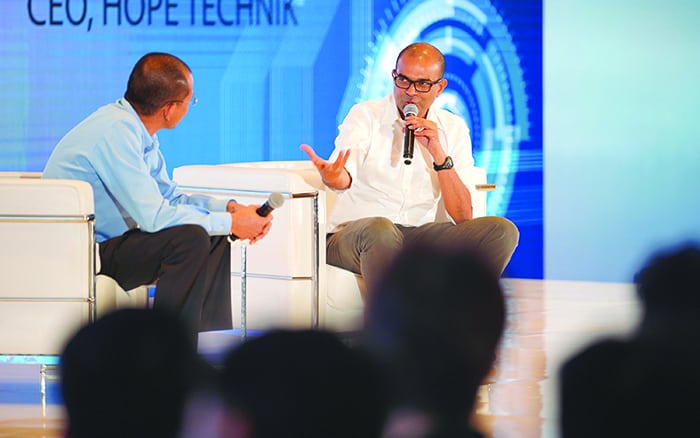Singapore government is updating its digital infrastructure to drive its Smart Nation transformation. From balancing agile and legacy systems to rethinking regulation and attracting talent, a whole host of issues is being addressed. A central part of this evolution involves updating the government’s digital infrastructure to support the needs of the future.
“We’re looking at how we can catch up with the dreams of tomorrow, not with the reality of yesterday,” said Dr. Janil Puthucheary, minister-in-charge of the Government Technology Agency of Singapore (GovTech), as he shares his insights at the first STACK 2018 Developers Conference.
The following summarises the five key points from Dr Puthucheary’s conversation with Mr Peter Ho, CEO of Hope Technik, during the conference.
1. A Mix of Legacy and Agile
Singapore’s digitalisation journey started 40 years ago. Naturally, there are components of the government’s IT systems that are dated, said Dr. Puthucheary. But going forward, things are not as simple as ‘out with the old and in with the new’.
“We do have a whole bunch of legacy systems … but those things have allowed us to become who we are today—wired, connected, with a highly digitally-literate population and in a position of confidence to have these big dreams for the future,” he explained.
Hence, he emphasised that it was important to reinforce systems that have served the nation well, learn from past mistakes, and introduce elements of agile development into the government’s workflow.
2. Pick the Right Pain Points
While technology can be used to tackle many grand challenges, it’s just as crucial to focus on the day-to-day problems faced by citizens. Dr. Puthucheary highlighted the mobile app Parking.sg as an example of how even small projects can have a big positive effect.
Whereas in the past, citizens would be fined if they did not display enough coupons to cover the duration of their parking, they can now extend parking sessions using their mobile phones.
“We’ve put up so many projects which are much larger in terms of funding, reach and the amount of engineering involved. … But the impact [of Parking.sg] on the daily lives of citizens in Singapore is so significant that everybody remembers it,” he said.

3. Re-Engineering Regulation
Much of the discussion about government digital services have revolved around the re-engineering of back-end processes and IT infrastructure. Dr. Puthucheary noted that “policy and regulatory re-engineering” are also necessary.
“As a result of having to [create the code] for a service, you’re going to have to modify policies and governmental processes as well,” he said.
Rather than cling on to rules that may stymie further innovation and efficiency in a digital age, the Singapore government is looking to evolve policies to suit the needs of the present and pave the way for the future.
4. Talent as a Two-Way Street
Behind every mobile app or digital service is a team of developers striving to create useful and user-friendly solutions. Talent is a critical ingredient for Smart Nations, and Dr. Puthucheary observed that the flow of people between the public and private sectors should be encouraged.
“[The government] should be hiring from the private sector, not to cannibalise talent, but to give people opportunities … to face challenges that they would not have otherwise experienced in the private sector,” he said. “And when they return to the private sector, they will be better off for it. The whole ecosystem of talent and opportunity will grow.”
5. From Singapore to the World
Singapore is not alone in trying to solve problems such as congestion and pollution. Many other cities across the globe are struggling with the same urban issues. Therefore, the solutions pioneered in Singapore can be viewed as exportable assets, said Dr. Puthucheary.
“The [innovations developed to solve our problems] here are applicable, transferable and deployable across the world if we get them right,” he explained. “By choosing to solve these big problems, we think that there is an opportunity to deal with some real, significant issues around the world at the same time.”
The above article was first published on tech.gov.sg. Photos courtesy of Government Technology Agency.

